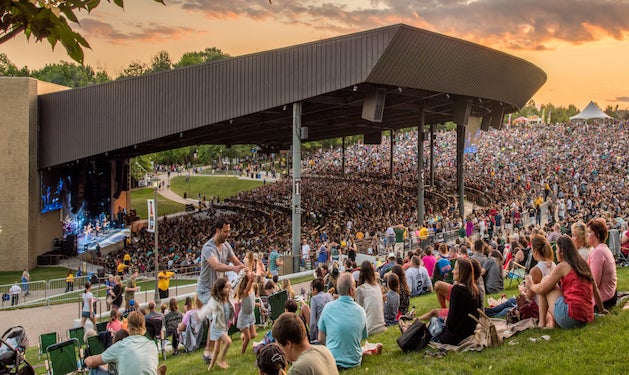Woodstock is Worth Every Mile: Collecting New Oral Histories in Florida
Dr. Neal V. Hitch, Senior Director, of The Museum at Bethel Woods, shares the stories of Woodstock.
In January this year, I drove over 1,200 miles around Florida collecting Woodstock stories. You might say, “That sounds like a lot!” It was. And “Why Florida?” Well, there are a couple of reasons, and it makes more sense than you might think.
First, Florida ranks #1 in the US for net migration. Nearly 2,000 people a day move there. And a lot of these people are from the East Coast and the Midwest. And they are retired. Retirement-aged people from the northeast just so happen to be the largest demographic of folks who attended Woodstock.
Second, the Museum team was fresh off our first travel pop-up program in October 2022 in New Mexico, a collaboration with Woodstock & Hog Farm alumna Lisa Law. In the lead-up to that program, over 127 people from around the country contacted Lisa about their interest in doing an interview. In Santa Fe, we were able to connect directly with 47 people, completing long-form interviews lasting an hour or more. The Santa Fe pop-up was amazing, and the people and their stories add great character to the collections at The Museum.
However, many of the people who had connected with Lisa did not live in New Mexico, and we did not want to miss out on meeting with them. So, where to next? A significant number of these folks were now living in Florida. The direction became clear.
I am always struck by the vulnerability, intimacy, and profundity of the oral history process. Part of the reason I’m writing this blog is to try to process and share just how special this work is. I want to share just three of the new stories that I collected during my time in Florida; each one entirely worth the 1,200 miles driven to hear them.
Anne’s Story
I wanted to meet with Anne after learning about how she drove to Woodstock from Bradenton, Florida with her friend Suzanne in a red VW Beetle affectionately named “Felix.” I thought this story was pretty compelling on that fact alone, but what I didn’t expect to find was that this trip with Felix wasn’t just a summer road trip. It was part of a journey dealing with loss.
“In the summer of ’69 my friend Suzanne and I were at school in Gainesville, Florida,” Anne began, “and we were kind of discouraged. It seemed weird sitting in an English Literature class when your friends - and her brother - were dying in Vietnam.”
Suzanne’s brother, Corporal William E. White, III, was killed in action on January 29, 1968, while serving in the 101st Airborne Division. He had been in Vietnam for two months. It was two weeks before his 21st birthday.
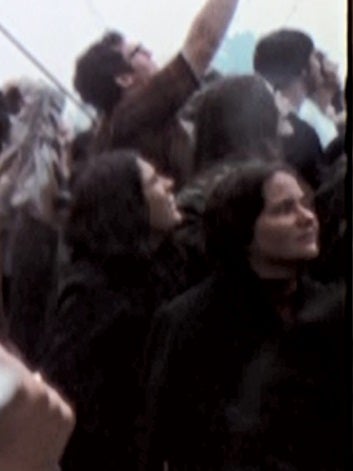
“Suzanne and I said, ‘We’re taking off. We’re taking the summer of '69 and we’re going to travel around and live life.’”
They spent the summer traveling and seeing music. They went to a festival in Miami. They visited friends in a cabin in North Carolina. They went up to the Newport Jazz Festival to see James Brown on July 6, and then they drove up to Canada to visit more friends.
In Toronto, they saw the posters for Woodstock, looked at the list of bands, and said, “What a lineup! We have to be there.”
The two friends drove down to Bethel early in the week. They parked “Felix” in one of the official camping areas and “set up a campsite on a hill, a beautiful spot.” Then they drove back into town to buy tickets and food.
“We had supplies,” remembers Anne, “but once people started coming who didn’t have supplies, we just made the whole loaf of bread into sandwiches and gave them out to people, and, you know, shared everything we had.”
On Friday, they parked themselves in front of the stage and never left. Anne remembers being close to the front when Richie Havens came on and she has vivid memories of seeing Sweetwater, Joan Baez, and John Sebastian. Though staying in the field for all three days, she does not remember the weather or lack of food ever being a problem.
“I think the rain, and the lack of resources made everything better. Because people that had food were sharing it. People who had dry clothes were sharing with people that didn’t have dry clothes. I mean, it brought the community together. That we had this going on, and the whole world was watching.”
To me, a big part of Anne’s story is about more than just attending a music festival. It paints a picture of two young women stinging from the loss of a family member in a confusing and divisive war, trying to make the most out of life, and seeing that maybe, just maybe, peace was possible.
But wait – there is more to Anne’s story.
Anne and Suzanne had stayed in front of the stage all day of the festival. They even danced to Sha Na Na on Monday morning. But as Jimi Hendrix prepared to come on stage and finally close the festival, it felt like it was time to go.
“We thought, well, we better go start packing up and stuff,” Anne recalls. “We headed back up to the campsite and we walked, and we walked, and we walked, and we thought, ‘What the heck is going on here?’ We could not find our campsite... and then we found the tent collapsed. The tent was down and Felix was gone. No Felix.”
“While Jimi Hendrix, I remember vividly, was playing the ‘Star Spangled Banner,’ we were looking for the police tent to report that Felix is missing.”
They said, “What’s Felix’s last name?” We said, “Volkswagen!”
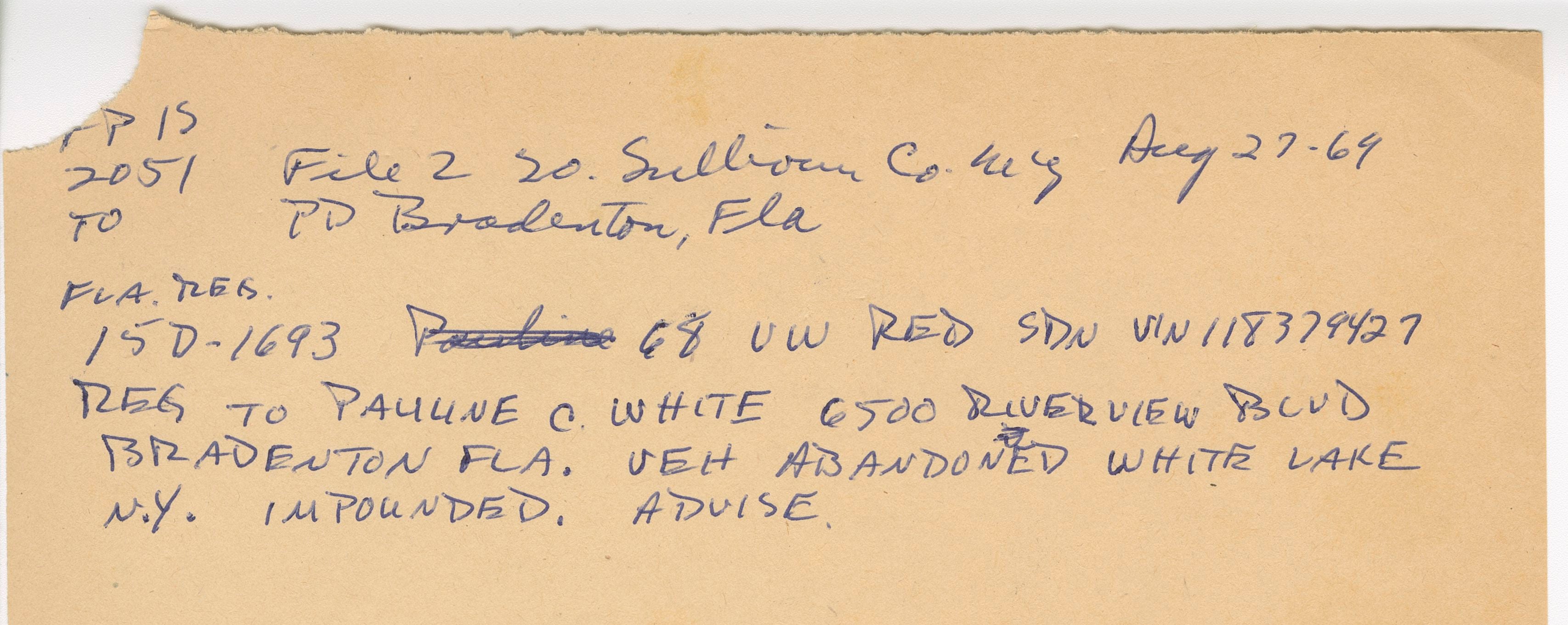
Unfortunately, there wasn’t much the authorities could do right then and there. Eventually, Anne and Suzanne caught a ride back up to Toronto where their Woodstock journey started. They stayed with their friends and then flew back to Florida.
“About the same day we got back to Florida,” says Anne, “the police called to say they had found Felix. Hurray, we get another trip to New York State.”
They caught a ride up to New York with some friends. In New York City, they saw the original Broadway production of “Hair,” which is still Anne’s favorite Broadway show. They caught another ride to Sullivan County and made it to the sheriff’s office.
“We got there and Felix was intact, unharmed, and everything was inside. The cameras and everything,” says Anne, “and there was a note and it said:
‘Sorry, we had to borrow your car.
We were freaking out and had to get out of the festival.’
While at the festival, Anne and Suzanne marveled at the experience of sharing all their food with a peaceful crowd. As it turned out, they had also shared their car. Felix was not stolen. Just borrowed. What could sum up Woodstock better than that?
John’s Story
John lives outside of Titusville. Now retired, he had a long career working at Cape Canaveral and participated in every NASA shuttle launch. But before all that, back in 1969, he was a surfer living in Cocoa Beach after a stint in the Air Force. He and a friend named John Baker jumped in his VW van and drove up to Bethel, New York, after hearing about the festival on the radio.
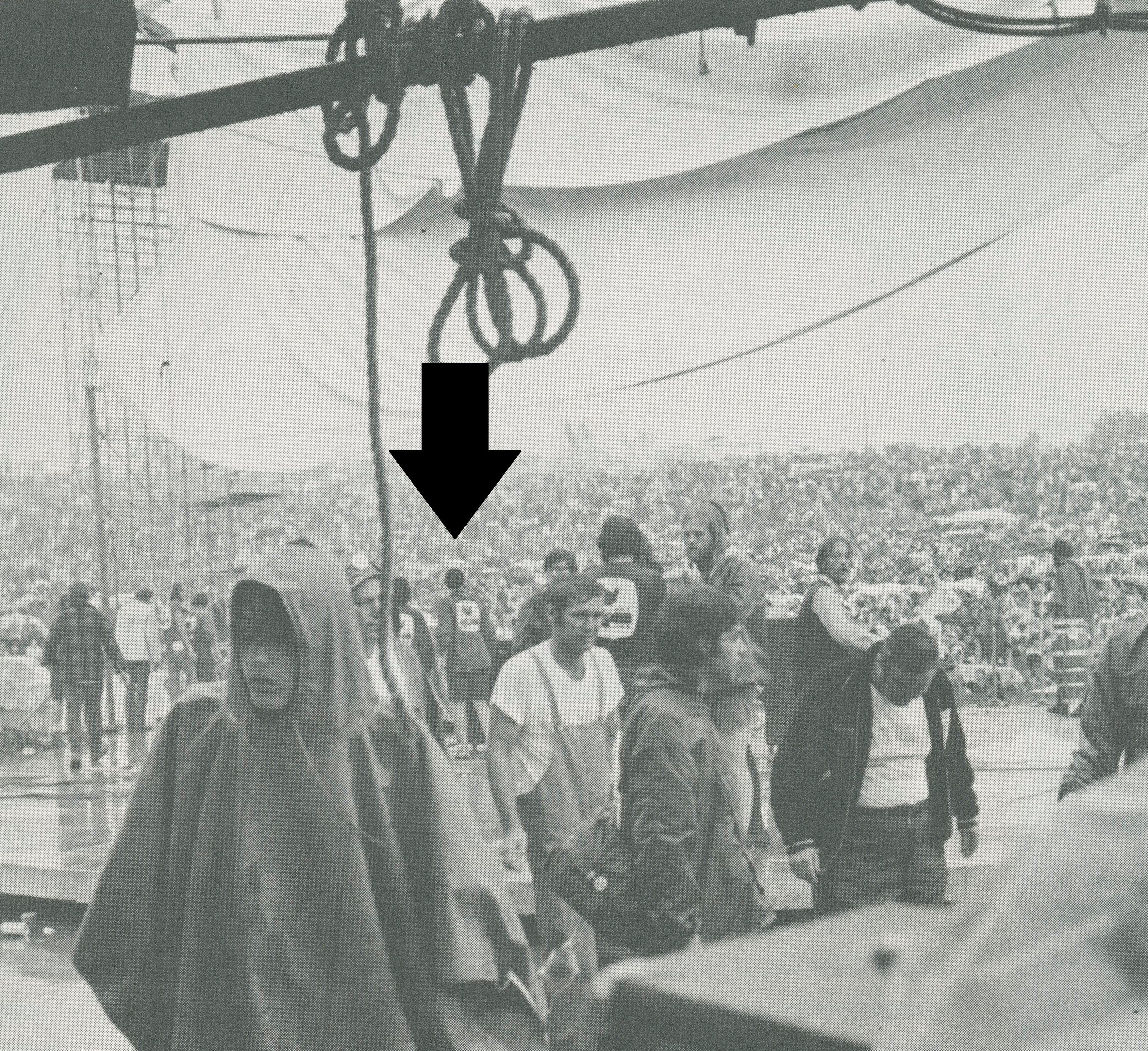
They arrived a week early. John was a guy who wanted to be in the thick of things; wanted to help. He put on a tool belt and went to work on the construction crew. A couple of days later, he moved on to the next project. “John and I put ourselves to use doing whatever we could,” he says. “I helped build the Performer’s Bridge.”
“Over to the left, I noticed this lady laying out this white muslin. Her name was Brigitte...she was a French lady,” says John. “I asked her if I could help her and she said, ‘Ah yes, please, I could use all the help I can get.’” John was given the task of laying out the chalk lines of a design and marking the areas with the colors they were to be painted. The tarps were then painted with industrial dye and left on the grass to dry.
On Thursday morning, one day before the festival started, he helped hang the murals on the bridge. Then he was issued a blue shirt and told he was going to work security. This is a story we have heard from others; art crew members and various volunteers. If you did a good job building the site, maybe you would do a good job securing it.
“Late Thursday afternoon…” he remembers, “they were just handing them out from a trailer, I had known that that trailer was where security was... I’m not a crowd kind of guy. I am always on the stage. So, I just went there and they gave me a T-shirt. We weren’t necessarily assigned to anything, but I just went right up onto the stage.”
“I was one of the people who would take messages from the crowd below… and give them to Chip Monck. A lot of time I was just hanging out and enjoying the music. I was on the stage the whole time.
He spent the three days of the festival on the stage – never officially working for Woodstock Ventures, never paid, his name never written down anywhere; just a random dude with an extraordinary Woodstock experience.
Richard’s Story
I wanted to meet with Richard because sometimes the lost histories of Woodstock are simply the stories of folks who didn’t have the best time. It’s no one’s favorite thing to rain on the parade of the world’s most famous festival, but the Museum wants to collect stories from all perspectives. It wasn’t an easy three days for everyone!
Today, Richard lives in Ft. Lauderdale. But in 1969 he was living in Massachusetts. At 16, he got permission from his mom to go to Woodstock. He and three friends jumped in a car and headed to Bethel on Thursday morning. Eventually stopped in traffic like everyone, the four friends parked on the side of the road and jumped on the trunk of a passing car.
In a town fairly close to the festival site, Richard says, “As we’re going along… another car going in the other direction clipped my ankle.”
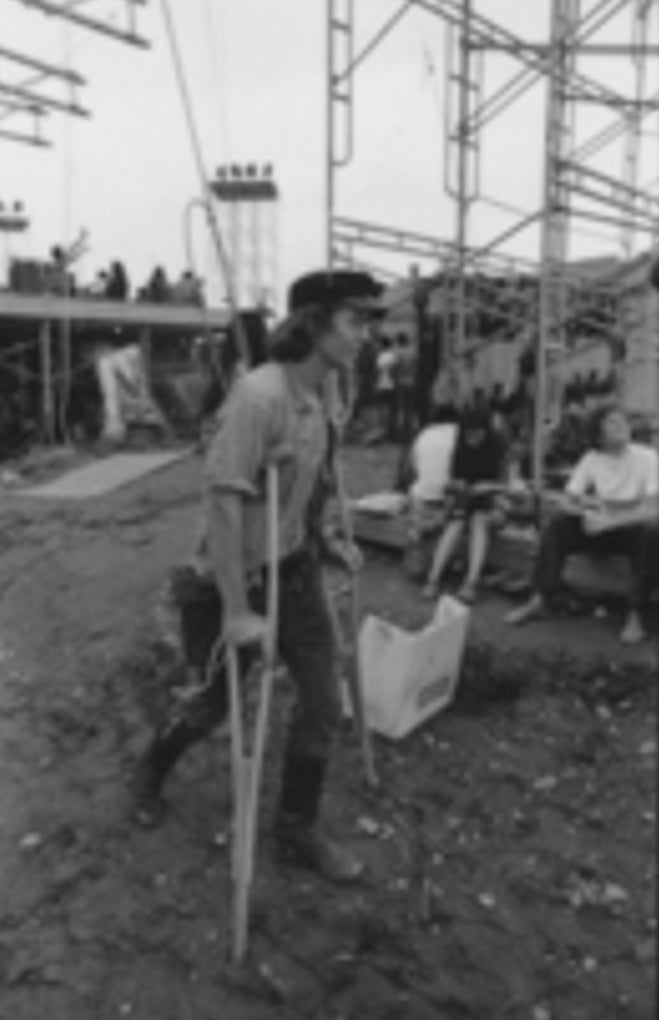
but it is another guy who was given crutches, which is not so uncommon.
He was spun around but held on. He thought for sure that was the end of his festival - but not so fast! Locals on the street pointed him to a clinic around the corner.
“I didn’t have to go very far to get medical help,” relates Richard, “and they had something set up there. I remember going around to the back of the building, and they took us in, and it looked like a legitimate medical place. They checked my ankle out, they said ‘We don’t think it’s broken, but you’re not going to be able to walk on it.’”
At the facility, the medical staff taped Richard’s ankle and gave him one crutch. He and his friends got ready to go and enjoy the rest of the weekend. Or so they thought.
As it was late in the day, Richard and his friends unrolled sleeping bags and set up a makeshift camp in the town square – well, a green space in the center of town anyway. “I’m not even sure if I could tell you which town it was,” he says. “There was a common ground, there was a green, there was a bakery store, and there was a fairly good road, with a lot of little shops on the road.”
On Friday, they awoke and all walked into the festival. Richard remembers it being one mile, but the closest towns; White Lake and Kauneonga Lake are both a little over 3.5. He walked that on a taped ankle with one crutch! Time flies when you’re headed to Woodstock.
They eventually arrived and sat on the top of the hill. They were there for Richie Havens, he remembers. They made it through Friday and most of Saturday, but as the sun went down during Canned Heat, Richard and his friends had had enough. They walked back to the small green space in the town, Richard still on the crutch, and spent the night again. Not the greatest Woodstock experience… and it wasn’t over yet.
When the four friends got back to the car on Sunday, it wouldn’t start. Richard had to call his mother, who drove 3½ hours to help them. When she arrived, they found that the car would not go into first gear, but it could be jump-started in second gear if it was going fast enough. So, Richard’s mother pushed their car with her own from behind until they could start it, following it from there. They had to repeat this process at every tollbooth along the New York State Thruway and the Massachusetts Turnpike all the home. Richard’s three friends had a slow but great trip home. Richard had to ride home from Woodstock with his surely not-too-happy mother.
Conclusion
The new stories we collected in Florida illustrate that many people’s reasons for attending Woodstock and their time there were very different from what we think of as the typical experience. Some experiences were not that great. Some were extraordinary. But all are authentic. All add a new piece to the jigsaw puzzle and help us see Woodstock and the 1960s a little more clearly.
Florida was a wild and very worthwhile ride. And as I look ahead to a year full of more travel, I know that it will be worth every mile.
***
Since 2020, the Museum has been deeply committed to the collection and preservation of stories from the people who know Woodstock best. In 2022, the Museum was awarded a major federal grant from the Institute of Museum and Library Services to take this initiative to the next level. Throughout 2023, Museum curators are traveling the country to capture these unique stories.
From April 5-8, 2023, The Museum at Bethel Woods together with #ComFest will be in Columbus, Ohio gathering the stories of Woodstock attendees.
If you attended or know someone who did, please consider sharing your story by emailing oralhistory@bethelwoodscenter.org.
